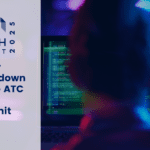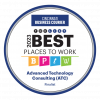
A technology roadmap, also called an IT roadmap, helps a company visualize how IT will grow and digitally transform to support the business, its core products, and reach an objective, value or milestone. Technology roadmaps outline the step-by-step strategy of major IT investments before any development and implementation work is started.
These roadmaps are essential to getting complex work done—such as addressing technical debt, infrastructure and growth-oriented innovation. Having a strategic IT roadmap helps your company move from responding reactively to proactively planning the technical capabilities your organization will need long term. Here are five things to consider when building your own strategic technology roadmap:
1. Why You’re Going Down This Road
The first and most important thing to consider may also be the most obvious—making sure you understand and can clearly articulate the vision and strategy behind your short- and long-term plans for the technology of your business. The key to building any roadmap is to start with the “why” before you determine the “what” and “when.”
Have a set of IT objectives that can easily be routed back to high-level business goals, so you can determine the initiatives and broader areas within your organization that will help you achieve these objectives.
2. Your Colleagues
You might be planning necessary technical changes for your company. But if you’re going to present this roadmap to executive leadership, you don’t want it to read like a tech manual. It’s important that other executives understand the terminology you use when presenting big IT projects.
Consider which audiences will view your technology roadmap, so you can build it using language all involved will understand. If you plan to share the roadmap with more than one audience, you will want to use web-based roadmap software. It allows you to quickly and easily build several versions of the same roadmap and switch effortlessly among the different views during your presentations.
The exact timeline and details that you include on your roadmap will depend on your audience. For instance, executives often want crucial information about the business context and financial outcomes, while engineers may require more technical details. Ideally, you will build a roadmap that can be easily customized for your intended audience.
3. Real-Time Updates
Many successful businesses use web-based roadmap software or a purpose-built roadmapping tool for their business. As work gets underway, this software allows your roadmap to be updated in real time. Goals, initiatives and other details can be entered once and multiple roadmap views can quickly and efficiently be created as needed. This lets you focus on the work that matters, rather than spending time making constant adjustments to your overall strategy or plan.
Your roadmap should be up to date and connected to real work. That way, people can navigate to the details they need and locate the status of any works in progress.
4. Building Your Roadmap With Cybersecurity in Mind
Today, every business is vulnerable to attack, not just major global brands, and the consequences of being unprepared can be catastrophic. Gartner reports that by 2023, up to 75 percent of organizations will restructure risk and security governance to address the widespread adoption of advanced technologies, an increase from fewer than 15 percent today.Developing a sound security strategy provides unified and reliable protection of your assets from potential threats. Businesses face a demanding and evolving threat landscape. A resilient cybersecurity strategy is essential to running a business while protecting against threats and preventing data breaches and other enterprise cybersecurity threats.
5. Support
What keeps you up at night isn’t necessarily the trouble you can foresee, but the trouble you don’t see coming that could disrupt your telecommunications and IT infrastructure. Even with a carefully planned and strategically developed roadmap, the best designed networks can be taken offline causing work interruptions and keeping your customers from being able to connect with you.When trouble strikes, you’ll need support to get you back up and running fast and without any headaches. ATC Super Support™ gives you a direct line to highly qualified and experienced support staff that provides personalized support above and beyond what your provider offers — regardless of which provider or service you’re experiencing trouble with.
ATC Can Help You Build a Roadmap to Success
ATC will empower your enterprise, mid-size or emerging business to drive transformation by tying strategy and technology to business outcomes and goals in the following ways:
- Digital IT Roadmapping
- Technology Consulting
- Network Transformations
- Cloud Strategy and Migration
- Cybersecurity Consulting
We provide business-driven IT strategies for successful digital journeys to help you navigate the multi-faceted, evolving technology landscape of today. Contact us for a proven approach to sourcing and implementing next-gen IT services.









